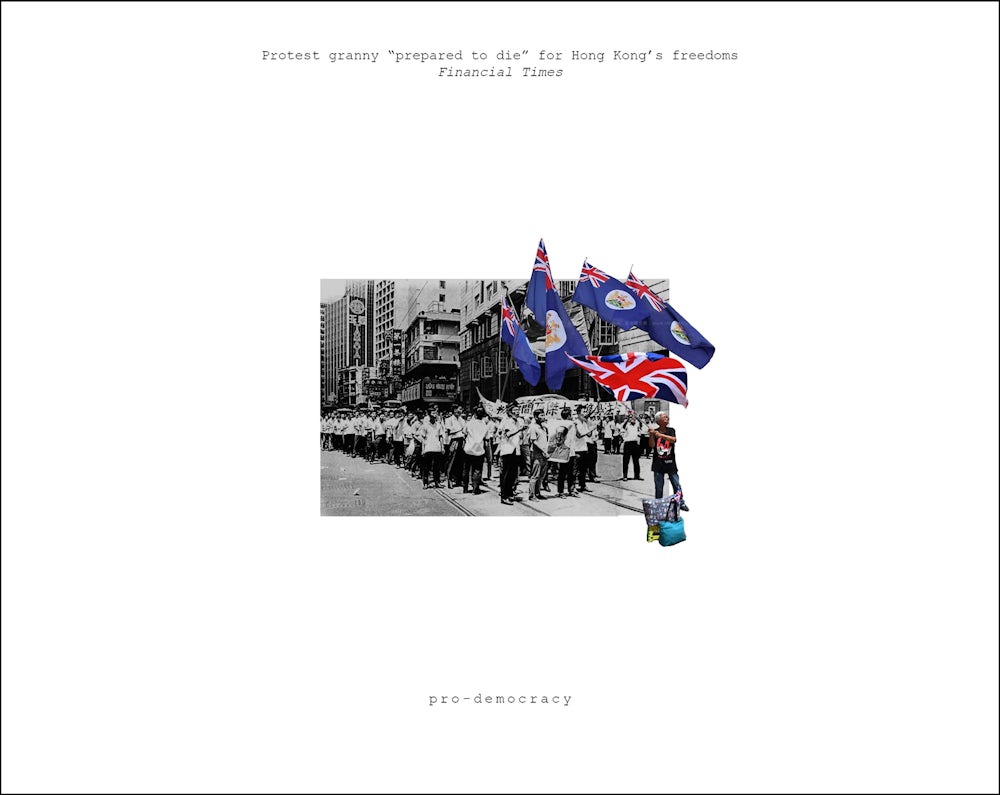Hei Ming Leo Tse
"hyper-cuiltural, hyper-territorial, hyper-temporal"
Section MS17, Lennaart van Oldenborgh
Keywords: archive, photography, resistance, memory, history
The 2019 Hong Kong Protests started as a movement against a proposed extradition bill, and then expanded into a wider pro-democracy and anti-Chinese Communist Party movement. However, there was a similar movement in 1967, yet with a completely opposite narrative. It started as a series of protests in support of workers' right and then developed into a pro-Chinese Communist Party movement.
Similarities could be drawn between the two, yet the dominant views on each are quite the opposite. Police in 1967 were largely praised in the western press, yet the Police in 2019 were heavily condemned. Protestors in 2019 were sympathised with, yet the ones in 1967 were denounced.
In response to "No photographer, even the most gifted, can claim ownership of what appears in the photograph" (from Ariella Aïsha Azoulay's The Civil Contract of Photography, 2008), the work aims to challenge the narrative by juxtaposition: juxtaposing the Praised and the Condemned, the Sympathised and the Denounced.
The series of images challenges what is right or wrong. They perforate the boundary of time between 1967 and 2019, the boundary of territory between British Hong Kong and Hong Kong Special Administrative Region, forming an image that is hyper-temporal and hyper territorial. By focusing on these two events, the work also challenges morality and narrative.






